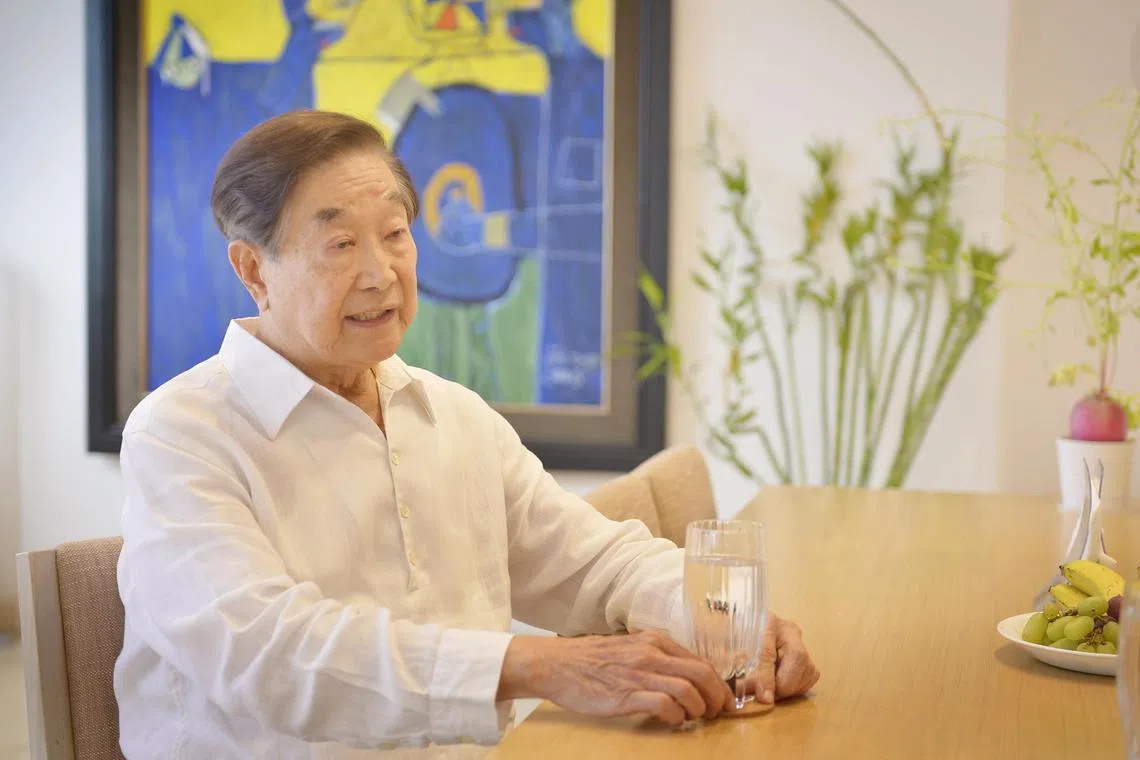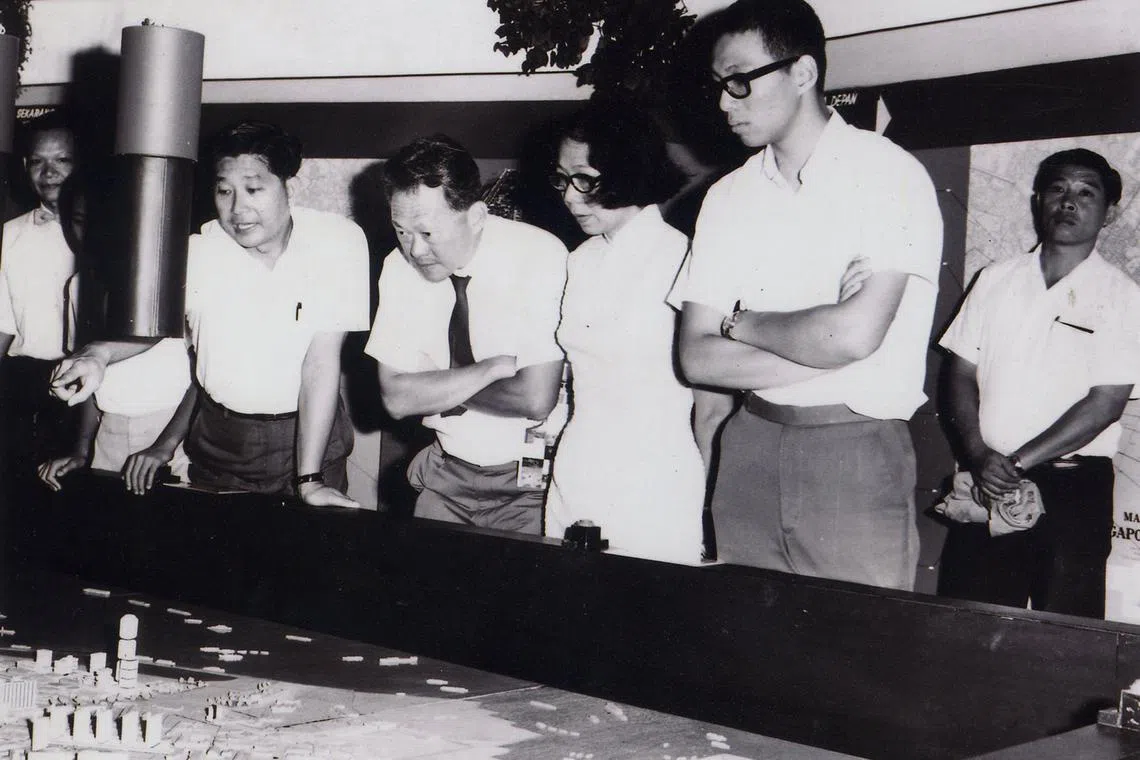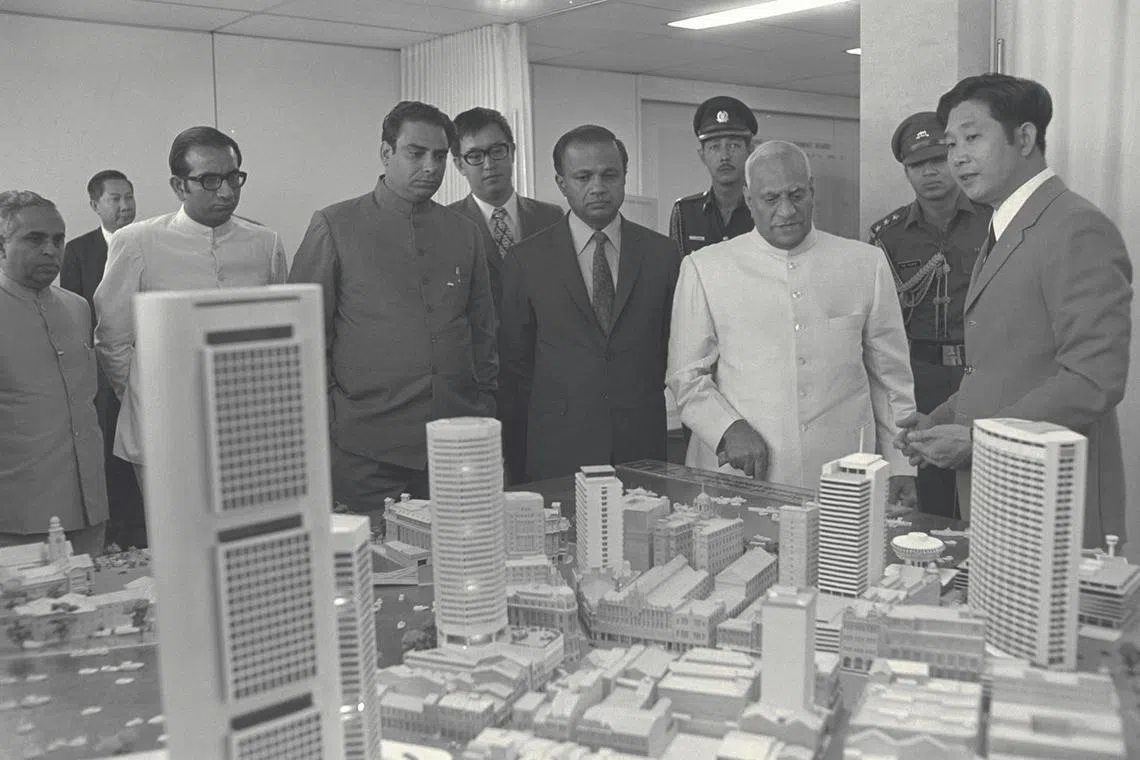Singapore’s pioneer urban planner and URA founder Alan Choe dies at 93
Sign up now: Get ST's newsletters delivered to your inbox

Pioneer urban planner Alan Choe made many contributions to Singapore while in the public service.
PHOTO: ST FILE
Follow topic:
SINGAPORE – Pioneer urban planner Alan Choe, the first architect-planner of the Housing Board and the founder of the Urban Redevelopment Authority (URA), died on May 27 at the age of 93.
Mr Choe made many contributions to Singapore while in public service. He was instrumental in laying the foundation for the country’s urban development and its heritage conservation programme, as well as turning Sentosa into a leisure and residential destination.
Colleagues and successors described Mr Choe as a visionary leader, the father of urban development in Singapore, and a true urbane gentleman.
Born on March 6, 1931, Mr Choe attended Pearl’s Hill School and Raffles Institution before he left for tertiary studies in Australia, where he read architecture, as well as town and regional planning.
He worked for architectural firms in Australia and Singapore before he was recruited by HDB in 1960 – the year he turned 29.
In a 2014 interview with The Straits Times ,
Queenstown – Singapore’s first satellite town – had its development initiated by the British Singapore Improvement Trust in the 1950s. The town’s development was taken over by HDB, which was formed on Feb 1, 1960.
Mr Choe said in a 1997 oral history interview that British architects had planned three of five Queenstown neighbourhoods before they left, leaving him with two to work on.
The housing densities that HDB required – 500 persons per acre, up from the 50 to 100 per acre that was the norm in Western societies – came as a shock to Mr Choe, but he pressed on and completed plans for the remaining neighbourhoods.
From 1964, Mr Choe headed HDB’s Urban Renewal Unit – the forerunner of URA, which was officially formed in 1974.
His role was to oversee urban renewal efforts for the central area and tackle housing shortages.
He worked with experts from the United Nations Development Programme – such as Norwegian town planner Erik Lorange – who were tasked in 1962 to assess if Singapore was ready for urban renewal.
Mr Choe described working with Mr Lorange in an interview published by URA in November 2019: “He came down, one to one. I was almost learning everything from him. Through him, I was able to walk every street in the Central Area.”
It was on visits overseas to learn about urban renewal that he saw reasons for Singapore to protect some of its built heritage.
“I have seen the state of urban renewal where they literally tear down all the old parts of the city. And I realised for Singapore, we have all the more reasons to preserve because we have so little,” he said.
Asked by then Prime Minister Lee Kuan Yew in 1967 if he had included conservation in his plans for urban renewal, Mr Choe shared his proposals for the conservation of Chinatown and Little India, among other areas.
Mr Lee responded to Mr Choe in a letter on June 3, 1967: “It is not often that I am able to get a response which showed that someone in the machine had already been thinking of the problems and feeling out for solutions and I would wish to congratulate you on the sensitivity with which urban renewal is being carried out, preserving what little there is of historic interest and recording in pictorial form for posterity what must economically be destroyed.”

(From left) Mr Alan Choe, the first architect-planner heading the Urban Renewal Unit, briefing Mr Lee Kuan Yew, Mrs Lee and Mr Lee Hsien Loong on urban renewal.
PHOTO: COURTESY OF ALAN CHOE
Mr Choe’s work, along with the contributions of others over the years, paved the way for Singapore’s first conservation areas to be gazetted in 1989. These included 3,200 buildings in areas such as Clarke Quay and Emerald Hill.
More than 7,200 buildings are conserved today.
Former URA chief planner and chief executive Khoo Teng Chye said Mr Choe was his first boss when he joined URA in 1976. “I will always remember him as a visionary and a professional who pioneered the urban renewal and creation of Singapore’s Central Business District from slums and congestion to the modern city skyline that we see today,” said Professor Khoo, a practice professor at NUS.
“He led the drawing-up of the Central Area plan and the land reclamation for what is now Marina Bay, where our new city is,” Prof Khoo said, adding that the Government’s sale of sites programme – started in 1967 – was Mr Choe’s initiative.
It was through the programme that the private sector had a bigger role to play in Singapore’s urban development, with icons such as People’s Park Complex and Golden Mile Complex among the first to be built on sold sites.
Prof Khoo noted that Mr Choe had a “unique emphasis on quality and design”, adding that this led to many international architects designing many of Singapore’s early urban renewal projects.
“There is much that Singapore owes him for what he has contributed to the planning and building of our city. He is the father of urban development in Singapore,” he said.

Mr Choe briefing then Indian President V. V. Giri (second from right), who was on a state visit to Singapore in 1971.
PHOTO: ST FILE
Former HDB and URA chief executive Cheong Koon Hean said that Mr Choe “left a very important legacy for urban planners and architects who came after him”, adding that “the Central Area as we see today was very much influenced by his work”. Prof Cheong said she served on some design review panels with Mr Choe while she was in URA, where they evaluated plans and projects.
“Alan came across as a true urbane gentleman. He gave of his time generously, provided constructive guidance and was encouraging to the younger planners. I have deep respect for him,” said Prof Cheong, chair of the Lee Kuan Yew Centre for Innovative Cities at SUTD.
Prime Minister Lawrence Wong said he fondly recalled his interactions with Mr Choe during his time at the Ministry of National Development, where Mr Choe was generous with his insights on balancing urban renewal and heritage conservation.
“His pioneering work laid the foundations for the architectural design, quality and planning that continue to shape today’s Singapore,” he wrote on Facebook on May 28.
National Development Minister Desmond Lee, writing on Facebook on May 28, said Mr Choe helped plan many of Singapore’s early public housing estates, and “showed remarkable foresight in safeguarding our older buildings”. He added: “His legacy will continue to inspire and influence generations.”
In an oral history interview in 1998, Mr Choe said he left the public service in September 1978 as he had increasingly been dragged into policy work as a senior public servant, and wanted to return to his first love – designing buildings.
He joined architectural firm RSP as a senior partner and worked on projects such as Parkway Parade and the Monetary Authority of Singapore Building. He also had a hand in developing the Singapore Indoor Stadium with Japanese architect Kenzo Tange.
He left RSP as a consultant in 1997, but continued to be involved in public projects outside his private sector work, such as Sentosa.
Mr Choe was a Sentosa Development Corporation (SDC) board member between 1972 and 1977, deputy chairman of SDC from 1977 to 1985, and chairman from 1985 to 2001.

Mr Choe (second from right) on Sentosa island in 1997.
PHOTO: ST FILE
Ms Thien Kwee Eng, CEO of SDC, said Mr Choe “was a visionary leader and an urban planner, who was instrumental in safeguarding Sentosa as a recreational resort island”.
She said that Mr Choe “was personally involved in driving the transformation of the island to be a leading destination for locals and international guests by proposing and developing many well-loved attractions such as Fort Siloso, a Coralarium, Palawan Beach Lagoon, the musical fountain and a world-class golf course”.
Mr Choe also helped to build the island’s first monorail system in 1982 and a causeway link in 1992, building on efforts to boost connectivity to the island after 1974, when the world’s first cable car system spanning a harbour was opened, connecting Sentosa to the mainland.
As SDC’s chairman, Mr Choe “introduced incentives to help attract private investments to Sentosa, and advocated more transformative developments, including the luxurious ocean front enclave Sentosa Cove”, said Ms Thien.
She added that he “was a big advocate of preserving Sentosa’s natural beauty and heritage”, emphasising balance between commercial needs and retaining its identity and greenery.
“We extend our heartfelt condolences to Alan’s family, friends and colleagues. As we mourn his passing, we also celebrate a life well lived and a legacy that will continue to inspire and guide future generations,” said Ms Thien.


